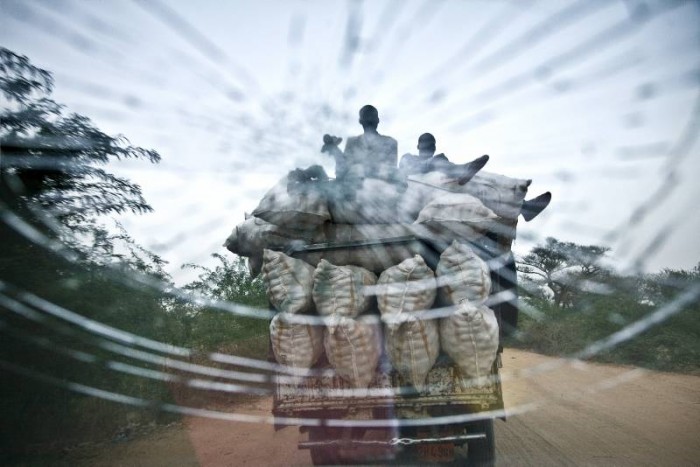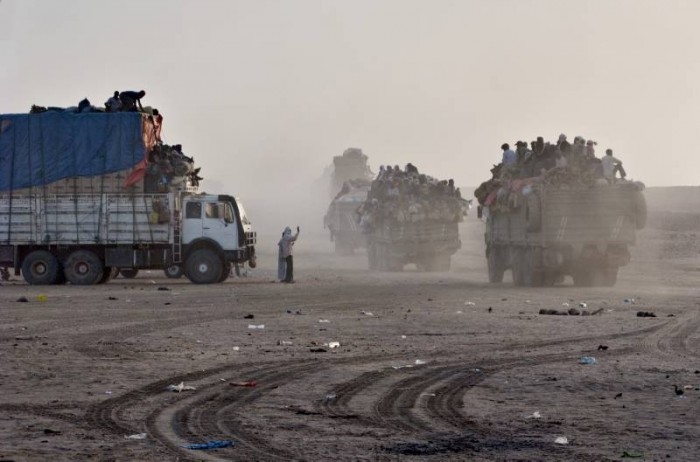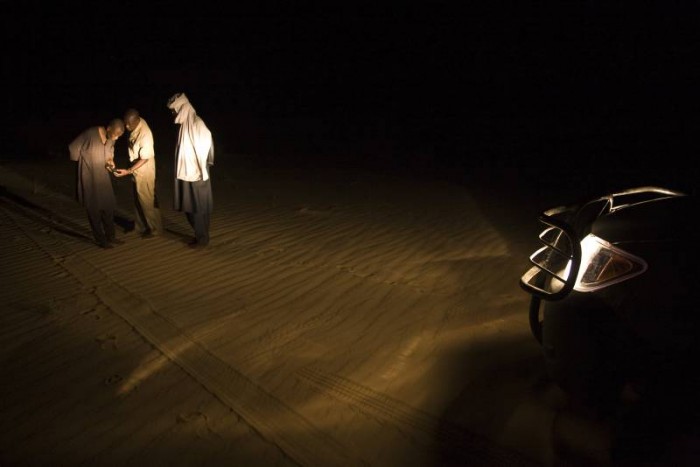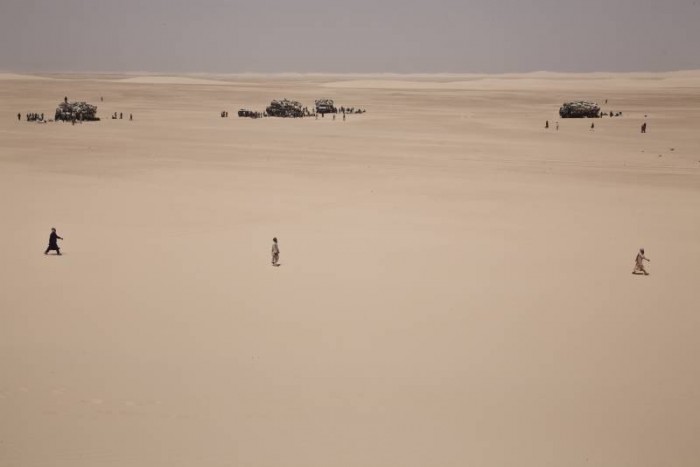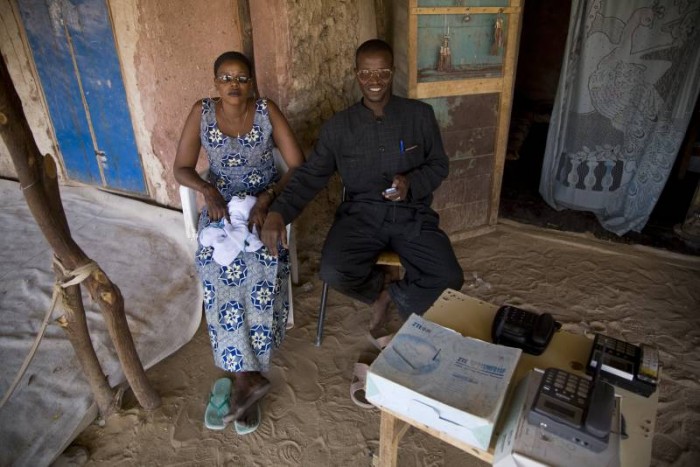This website uses cookies so that we can provide you with the best user experience possible. Cookie information is stored in your browser and performs functions such as recognising you when you return to our website and helping our team to understand which sections of the website you find most interesting and useful.
Migrants crossing the Tenere desert
-
PrizeSilver in Photojournalism/Feature Story
-
PhotographerEva Zamboni, Italy
-
Website
Migrants crossing the Tenere desert
A journey of thousands of kilometres along the trans-Sahara route towards Libya, obligatory for those attempting to enter Europe via Lampedusa.
01 Maradi - Niger, on the road from Nigeria. Passengers on an onion truck.
02 Niger - Turawet Oasis, c.100 km from Agadez. The convoy's first stop.
03 The Tenere Desert, Niger
Between the Achegour well and the Kaouar area, 80 km from Dirkou. Departure is before daylight, after checking bearings with the GPS.
04 Tenere Desert.
Lat: 18,9961 â?? Lon: 12,8932
Trucks arriving from Lybia used for repatriations.
05 Niger â?? Dirkou. Radi, Ivorian, 30. Radi has been in Dirkou for 2 months. She works for O.K, a local inhabitant who also employs three other migrants from Cameroun in his kitchen garden. Radi manages O.Kâ??s telephone centre and must also carry out the duties of half-wife to O.K, who already has two wives
Since the beginning of 2009 about 8000 migrants have crossed the Tenere Desert each month in a bid to reach Europe, and in particular Italy. This is the biggest migrant flow of the last six years. They travel from the southern states to Niger by whatever means they happen to find. Some stay in the cities to try and earn some money; only then do they cross the desert to the oasis of Dirkou, the departure point for Lybia. A good number of them will succeed in setting off, but those without money will be stranded in Dirkou. They refer to themselves as stranded to identify themselves amongst those who do not manage to set off on the next leg of the journey. Amongst their number are those who simply do not have enough money, have been robbed, have miscalculated the racket money due at the control posts. The only hope of being able to resume the journey is to work, unpaid, for a master until he pays them. Many adapt to doing any kind of work, but for some the thought of being exploited, inferior and abandoned can prevent reaction, condemning them to a long period of slavery. The women are forced to accept even more unpleasant compromises: working and providing sexual satisfaction for a master, or working in one of the three local brothels for 1500 CFA per appointment. They have no alternatives! There were about 7000 people in Dirkou in early April 2009. Official statistics set the mortality rate caused by the harsh travelling conditions at about 12%. One imagines that it is actually much higher. At the same time in pre-electoral Europe politicians were discussing the legitimacy of sending boats back out to sea, and the Italian parliament was preparing for the definitive approval of the Safety decree, a legislative text which institutes the new crime of clandestinity.
Alfredo Bini is a free-lance photographer and has found his own personal form of expression in social reportage photography. He concentrates on stories of social relevance and hopes that his images contribute to the enhancement of public awareness of unbalanced situations. His work has been on show in exhibitions and photography festivals in Europe and the USA. His reportages won national and international awards such as Travel Photo Of The Year, IPA Awards, PX3-Prix de la Photographie, Fotoweek DC Washington, Bruce Chatwin Award, Days Japan award and are used as debating material for presentations and conferences in public venues, Universities and on tv news programs. He is represented by the agency Cosmos since 2010.
